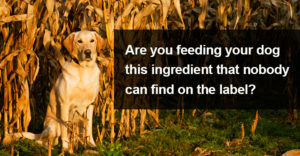Until recently, “human-grade dog food” was an overused marketing term used to imply better quality food. There were no regulations to be met and you couldn’t tell the ones playing to a higher standard from those using spiffy labels on their products … but that has changed.
In early 2023, AAFCO published new guidelines for human-grade dog food. The term is better defined and requires specific documentation in order for manufacturers to label their products human-grade.
What is Human-Grade Dog Food?
The Association of American Feed Control Officials (AAFCO) oversees pet food labeling and regulations. They determine how pet foods can be labelled and what claims can be stated about the food. Now with AAFCO’s new guidelines, there should be no question about what constitutes a human-grade dog food.
The guidelines mean manufacturers must provide better clarification of high quality ingredients that we might eat from the low quality ingredients and waste products that often find their way into pet foods. In addition, the USDA offers another way to tell if dog food ingredients are really human-grade.
Edible Vs Inedible
Inspecting human foods for quality and safety falls under the United States Department of Agriculture (USDA). While the USDA also doesn’t use the term human-grade, they do define products that are fit for human consumption as “edible.”
While many pet food ingredients can be rotting carcasses and waste products, all “edible foods” must follow federal (FDA) regulations for safe manufacturing, packing and storage. But pet food makers always find a way around regulations and they found a way to make “inedible” foods sound like they’re better than they are.
Up until 2023, you might find a human-grade dog food that says “sourced from a USDA inspected facility.” However, all foods go through a USDA inspected facility: it’s how they come out that matters. While edible food is handled and stored safely and finds its way to the human food market, the adulterated decaying, discarded waste is sold to pet food companies. AAFCO allows and even encourages these “inedible” ingredients in pet foods, including “hair, hoof, horn, hide trimmings, manure, stomach and rumen contents.”
But that’s no longer possible under the new human-grade regulations.
How Changes Affect Pet Owners
The biggest difference pet owners will see is in the package labeling. All uses of the term “human-grade” cannot be larger than the product’s name or type of food. The new standards also stipulate that human-grade is only applicable if all the ingredients within the product meet human-grade pet food requirements … vitamin premixes included.
2023 AAFCO Guidelines For Human-Grade Dog Food
The biggest change in the new guidelines is for manufacturers to document the origins of every ingredient throughout the supply chain to make their claim of human-grade dog food.
Here are highlights of AAFCO’s 2023 guidelines to meet human-grade regulations:
- Human-grade includes the entire product and every ingredient in it.
- Human-grade is not mandatory.
- If the term is used, all human-grade processing facilities must be registered as both an FDA food facility and an FDA feed facility.
- Manufacturers must maintain written procedures documenting proper handling throughout the distribution channel.
- Manufacturers must make documentation available to verify:
- All supplied ingredients are fit for human consumption
- Every ingredient and all products are stored in compliance with the FDA’s controls for human food.
- The manufacturing facility is licensed to produce human food by all required authorities.
Manufacturers must ensure the following labeling requirements are met:
- Products are clearly labeled for use as animal food, noting the animal and whether it’s a food or treat
- Statements of quality or grade cannot appear on the ingredient statement
- The most prominent use of the term must be juxtaposed with its statement of intended use
- The product as a whole must meet the requirements of human-grade pet food
Who Is Involved In Human-Grade Dog Food Claims?
There are a few organizations at play when it comes to pet food standards and regulations. So it can get a little confusing. Let’s clarify who does what in the pet food world.
The FDA
The US Food and Drug Administration (FDA) is the federal agency responsible for regulating pet foods. The FDA “writes regulations and guidelines for animal feed manufacturers to follow when making animal feed.” The FDA also helps to regulate pet food labels. They ensure labels include information such as the name and location of the manufacturer. Ingredient listing in descending order is also something they watch.
The USDA
USDA’s Food Safety and Inspection Service (FSIS) handles inspections of meat, poultry and eggs in the human food chain. If you want “human grade” meat, it must come from the human food chain. Meaning the brand that uses inspected & passed meat from a USDA inspection.
AAFCO
The Association of American Feed Control Officials (AAFCO) is a private corporation. Despite what many people think, AAFCO does not regulate pet food or ingredients (that’s the FDA’s job). But, it creates a model bill that many states follow. Its committee members include representatives from major feed manufacturers and ingredient suppliers. Including Nestle Purina, Hills Pet Nutrition, Nutro Products and Cargill Animal Nutrition.
RELATED: What Is AAFCO?
Human-Grade And Feed-Grade Foods
Most pet food falls into the “feed-grade” category. According to AAFCO, feed-grade is “material that has been determined to be safe, functional and suitable for its intended use in animal food… unless otherwise expressly permitted by the appropriate state or federal agency (suitable for use in animal feed).”
Since it’s such a vague definition, there are some nasty things allowed in feed-grade pet food ingredients. This can include rendered meat and bone meals that include grease, blood, feathers, offal, & entire animal carcasses. Rendering plants can source the animal material from a variety of places, including:
- Supermarket waste (often with the plastic still on)
- Restaurants (including discarded grease)
- Feedlots
- Animal shelters (deceased animals)
Fast food cast-offs and deceased shelter animals are certainly low quality ingredients, while rendering these products at high temperatures also create toxic heterocyclic amines and acrylamide to accumulate in the food. Both are cancer-causing compounds that form when meats and starches are exposed to high temperatures.
RELATED: Meat In Pet Foods: Is It Really Meat?
What Dog Foods Are Human-Grade?
With these new regulations, all pet foods labeled human-grade should be exactly that … until manufacturers come up with clever workarounds. If you don’t want to fall victim to marketing, the best way to ensure your pet is eating human-grade dog food is to make it yourself. You can source the ingredients directly from the human food chain (i.e. your local grocery store or butcher shop).
RELATED: How To Make Your Own Dog Food …
Your other option is to support one of the brands producing human-grade dog food. Despite the rigid criteria, there are brands on the market that offer true human-grade dog foods. This list may not be complete, but it includes:
- The Honest Kitchen
- Caru
- Evermore Pet Food
- Ollie
- Nom Nom Now (Owned by Mars)
- Open Farm
- The Farmer’s Dog
- Spot Farms
Note: The brands on this list appear to be independently owned at the time of writing except where noted.
What About Human-Grade Raw??
You might be wondering about human-grade raw dog food. Here’s the sad news… based on AAFCO’s current guidelines for human-grade dog food, raw food doesn’t qualify. AAFCO states all ingredients must be human edible and raw meat isn’t considered human-edible without cooking. This is why we see cooked, fresh foods labeled as human grade … but not raw food.
This certainly doesn’t mean commercially prepared raw food is bad or of lower quality: in fact, raw and raw freeze-dried foods are our top choices for quality ingredients and safety.
With that said, you’ll want to ask your raw food company (or local pet store) where their meat comes from. Many use meats and supplements from the human food chain but are not allowed to call their food human grade.
RELATED: Raw Dog Food: Homemade Vs Store-Bought …
Is Human Grade Food Better For Dogs?
Human-grade foods can be a great addition to your dog’s diet. But it’s hard to say when human-grade dog foods under the new guidelines will hit the marketplace so watch the labels. And remember … if the human-grade claim is larger than other aspects of the label, they’re not following AAFCO’s new rules and probably aren’t human-grade.
RELATED: How Is Dog Food Made?









